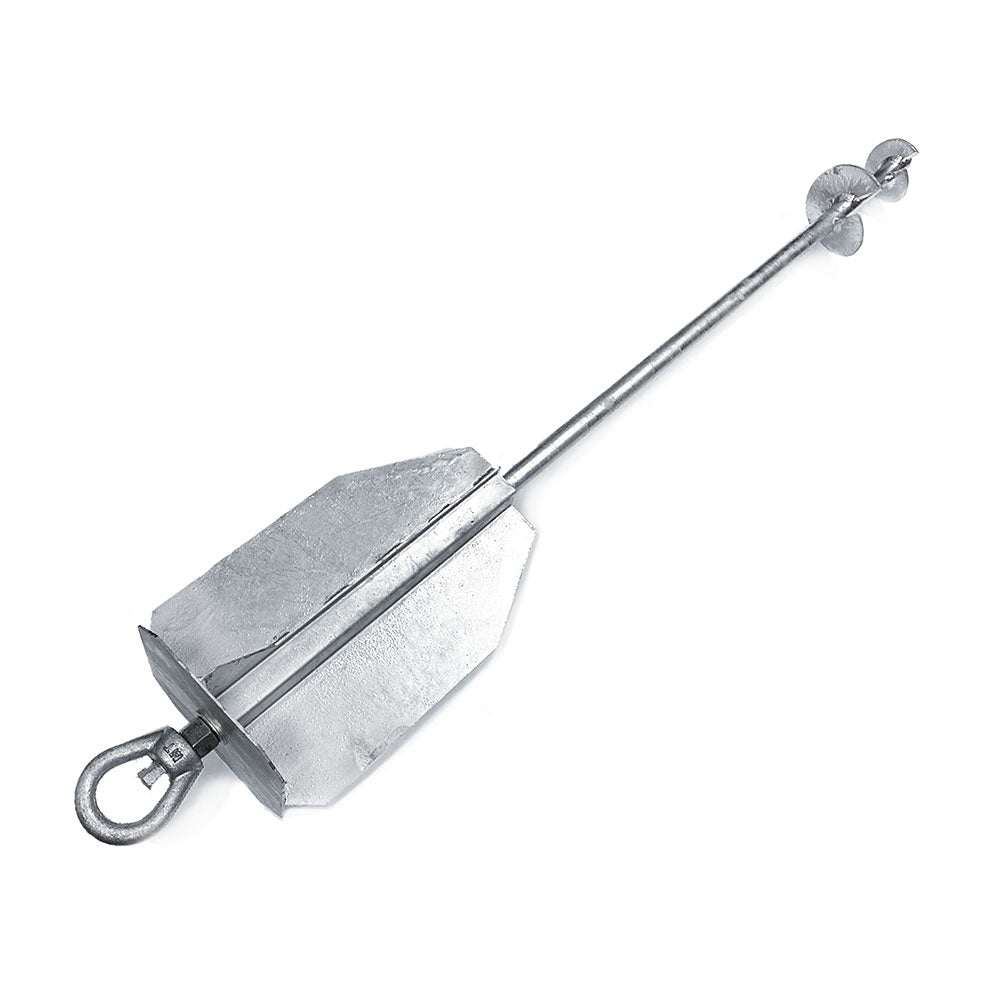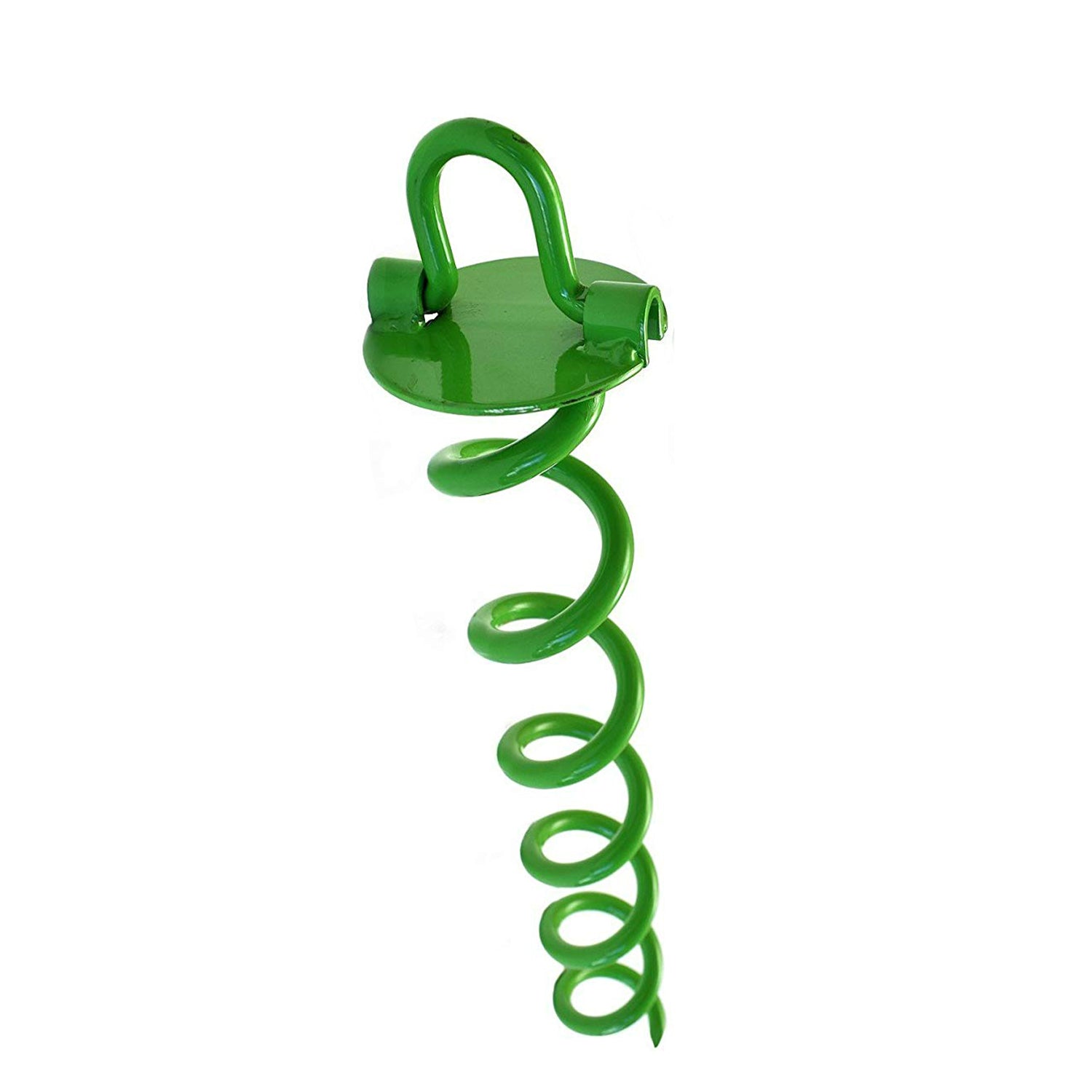Essential Aspects Before Getting a Reliable Ground Anchor
Essential Aspects Before Getting a Reliable Ground Anchor
Blog Article
Explore the Different Kinds of Ground Support for Your Next Job
From auger anchors, which succeed in varied dirt problems, to stake anchors created for short-lived installments, the choices are numerous. Additionally, concrete and screw anchors existing one-of-a-kind advantages in specific circumstances, while deadman supports are tailored for applications needing resistance to lateral forces.

Auger Anchors
Auger supports are a prominent selection in different building and landscaping projects due to their one-of-a-kind style and efficient anchoring capabilities. These anchors include a helical screw-like shaft that is driven into the ground, enabling a safe and stable hold. The spiral style helps with easy installation and optimizes resistance against lateral forces, making auger anchors specifically effective in applications such as secure fencing, temporary structures, and disintegration control.
The setup process of auger supports is reasonably straightforward. Auger anchors can be quickly gotten rid of and recycled, which includes to their cost-effectiveness and sustainability.
Among the considerable advantages of auger supports is their ability to disperse lots equally across the bordering dirt, reducing the risk of soil disturbance and decreasing environmental influence. Furthermore, they are less susceptible to loosening up or heaving gradually compared to traditional anchoring techniques. Auger supports are an exceptional selection for projects needing resilient and trusted anchoring solutions.

Stake Anchors
When it comes to securing structures in a variety of outside applications, risk supports use a straightforward and reputable remedy. These anchors are typically built from long lasting materials such as steel or aluminum, made to stand up to ecological stress and anxieties while giving optimum stability. Their easy style enables for quick installment, making them an excellent selection for short-lived or permanent anchoring demands.
Stake supports are particularly useful in protecting camping tents, canopies, and various other light-weight frameworks versus wind and weather. They function by being driven into the ground at an angle, developing a solid hold that withstands pull-out pressures - Ground Anchor. The efficiency of risk anchors relies on several variables, consisting of dirt type, moisture material, and the angle of installment
For included safety and security, lots of risk anchors feature accessory factors for ropes or bands, permitting for tension adjustments as needed. In applications such as landscape design or construction, they can properly support equipment or structures on uneven surface. Overall, stake supports give a functional and cost-efficient solution for securing various exterior installments, making them a favored option for service providers and DIY enthusiasts alike.
Concrete Anchors
Concrete anchors offer a robust remedy for protecting structures to concrete surfaces, making sure security and safety and security in numerous applications. These anchors are necessary for projects varying from property buildings to large-scale commercial setups. They are available in different types, consisting of development anchors, adhesive supports, and undercut supports, each developed for particular lots requirements and environmental problems.
Sticky anchors use high-strength epoxy or material to bond the anchor to the concrete, using exceptional load-bearing capabilities, specifically in cracked concrete situations. Undercut supports develop an one-of-a-kind shape within the concrete, giving outstanding holding power, particularly in applications where tensile lots are common.
When carried out properly, concrete anchors substantially boost the architectural stability of numerous projects, making them essential in modern-day building practices. Understanding the certain requirements of your task will aid in choosing the best type of concrete anchor for the job.
Screw Anchors

Screw anchors are a functional fastening service that can be effectively employed in a range of applications where traditional concrete supports may not be sufficient. These anchors include a helical design that enables them to be quickly driven right into the ground, making them perfect for use in dirt and various other substratums. Their unique framework gives superb holding power and resistance to pull-out pressures, making them ideal for various jobs, from landscape design to architectural assistance.
Among the key benefits of screw anchors is their simplicity of installation. They call for marginal equipment and can usually be mounted without the demand for excavation, which conserves both time and labor costs. Furthermore, screw supports can be removed and reused, using a sustainable service for temporary applications.
Screw anchors are particularly advantageous in areas where dirt problems are challenging, such as sandy or loose soils. Their capacity to be installed at differing midsts enables modification based on details job requirements. Generally, screw anchors provide a reliable and efficient anchoring technique, making them a superb choice for engineers and service providers seeking effective remedies for their tasks.
Deadman Anchors
Deadman anchors work as a durable solution for maintaining frameworks in difficult problems, particularly where standard anchoring approaches might fail. These anchors consist of large, heavy things buried underground, which develop resistance against side pressures. The layout generally involves a horizontal element, such as a block of concrete or a steel plate, hidden in the soil, to which cables or straps are attached.
The efficiency of deadman supports hinges on their capacity to distribute lots next page over a larger area, reducing the risk of failure in unsteady dirt problems. They are specifically helpful in applications such as retaining wall surfaces, temporary frameworks, and slope stablizing, where dirt activity can compromise the stability of the framework.
Installment of deadman anchors needs careful planning to guarantee they are put at the right deepness and alignment, maximizing their load-bearing capability. While they might need more labor and product than lightweight supports, their reliability in adverse conditions makes them important for long-lasting tasks. Deadman Check Out Your URL supports are functional and can be adjusted to various applications, making them a best choice for designers facing unique obstacles in their projects.
Verdict
Auger anchors succeed in diverse dirt conditions, while stake supports suit momentary applications. For concrete surfaces, development and sticky anchors give reputable choices, and screw anchors use flexibility in challenging surfaces.
In addition, concrete and screw anchors present unique advantages in details scenarios, while deadman supports are tailored for applications requiring resistance to lateral forces - Ground Anchor.Auger supports are a popular option in numerous building and landscape design tasks due to their one-of-a-kind style and efficient securing capabilities. They come in various kinds, consisting of development supports, glue supports, and undercut anchors, each created for certain load needs and ecological conditions
Adhesive supports use high-strength epoxy or resin to bond the support click to investigate to the concrete, supplying premium load-bearing abilities, specifically in cracked concrete circumstances. Overall, screw anchors provide a trustworthy and effective anchoring approach, making them a superb choice for contractors and designers seeking reliable options for their projects.
Report this page